
|
Astronomy Picture Of the Day (APOD)
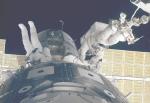 Assembling The International Space Station
Assembling The International Space Station
9.12.1998
Batteries and solar panels were included with this version of the International Space Station (ISS) but some assembly is still required. On Saturday, December 5th, the STS-88 crew of the Space Shuttle Endeavor achieved the in orbit docking of the Zarya and Unity (foreground) ISS modules.
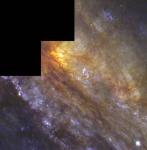 NGC 253: The Sculptor Galaxy
NGC 253: The Sculptor Galaxy
8.12.1998
NGC 253 is not only one of the brightest spiral galaxies visible, it is also one of the dustiest. Discovered in 1783 by Caroline Herschel in the constellation of Sculptor, NGC 253 lies only about ten million light-years distant.
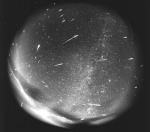 Leonids from Leo
Leonids from Leo
7.12.1998
Is Leo leaking? Leo, the famous sky constellation visible on the left of the above all-sky photograph, appears to be the source of all the meteors seen in this year's Leonids Meteor Shower.
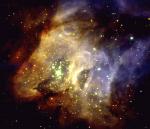 Star Forming Region RCW38
Star Forming Region RCW38
6.12.1998
Star cluster RCW38 was hiding. This open cluster of stars is located about 5000 light years away towards the constellation of Vela. Looking there will not normally reveal most of the stars in this cluster, though.
 CG4: A Ruptured Cometary Globule
CG4: A Ruptured Cometary Globule
5.12.1998
The odd looking "creature" to the right of center in the above photo is a gas cloud known as a cometary globule. This globule, however, has ruptured. Cometary globules are typically characterized by dusty heads and elongated tails.
 Surveyor Hops
Surveyor Hops
4.12.1998
This panorama of the cratered lunar surface was constructed from images returned by the US Surveyor 6 lander. Surveyor 6 was not the first spacecraft to accomplish a soft landing on the Moon ... but it was the first to land and then lift off again!
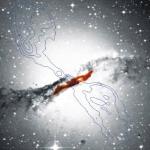 Centaurus A: The Galaxy Deep Inside
Centaurus A: The Galaxy Deep Inside
3.12.1998
Deep inside Centaurus A, the closest active galaxy to Earth, lies ... another galaxy! Cen A is a giant elliptical galaxy a mere 10 million light-years distant with a central jumble of stars, dust, and gas that probably hides a massive black hole.
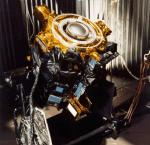 Deep Space 1
Deep Space 1
2.12.1998
Going gently into the night, Deep Space 1's ion drive has been running smoothly since it was restarted on November 24. How powerful is this high-tech spacecraft's ion propulsion system? At full...
 A Deep Field In The Southern Sky
A Deep Field In The Southern Sky
1.12.1998
This new deep view of the cosmos is the sequel to the 1995 hit Hubble Space Telescope Deep Field. Billed as the Hubble Deep Field South, it was produced by pointing the space telescope toward a patch of sky in the southern constellation Tucana.
 Cepheus 1: Nearby Galaxy Hiding
Cepheus 1: Nearby Galaxy Hiding
30.11.1998
Some galaxies are hard to find. Besides being hidden behind the dust and bright foreground stars of our Milky Way Galaxy, recently discovered Cepheus 1 was missed previously because it is so uniformly dim.
|
January February March April May June July August September October November December |
||||||||||||||||||||||||||||||||||||||||||